MG413 Presentation: Data Analysis, Big Data & Decision-Making
VerifiedAdded on 2023/06/10
|25
|2080
|86
Presentation
AI Summary
This presentation provides a comprehensive overview of data analysis techniques, focusing on quantitative and qualitative research methods, correlation and regression analysis, and time series analysis. It highlights the role of questionnaires and interviews in data collection, as well as the application of statistical analysis and thematic analysis. The presentation also critiques the issues surrounding these analysis techniques, with specific reference to the impact of big data on modern business decision-making. Ultimately, the presentation emphasizes the importance of data-driven insights for informed decision-making and strategic planning.

CW2 STRUCTURE
Paraphrase This Document
Need a fresh take? Get an instant paraphrase of this document with our AI Paraphraser
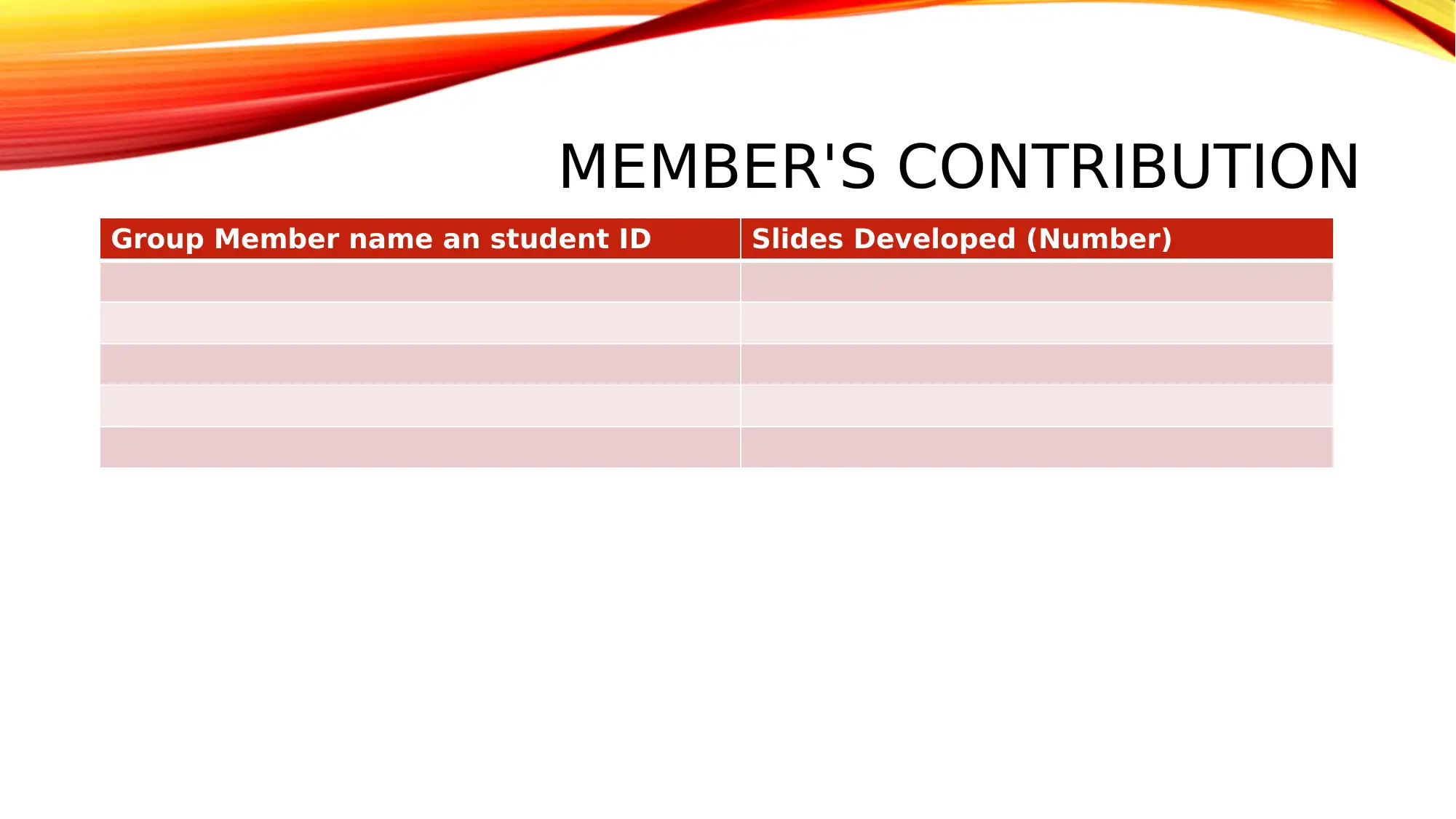
MEMBER'S CONTRIBUTION
Group Member name an student ID Slides Developed (Number)
Group Member name an student ID Slides Developed (Number)
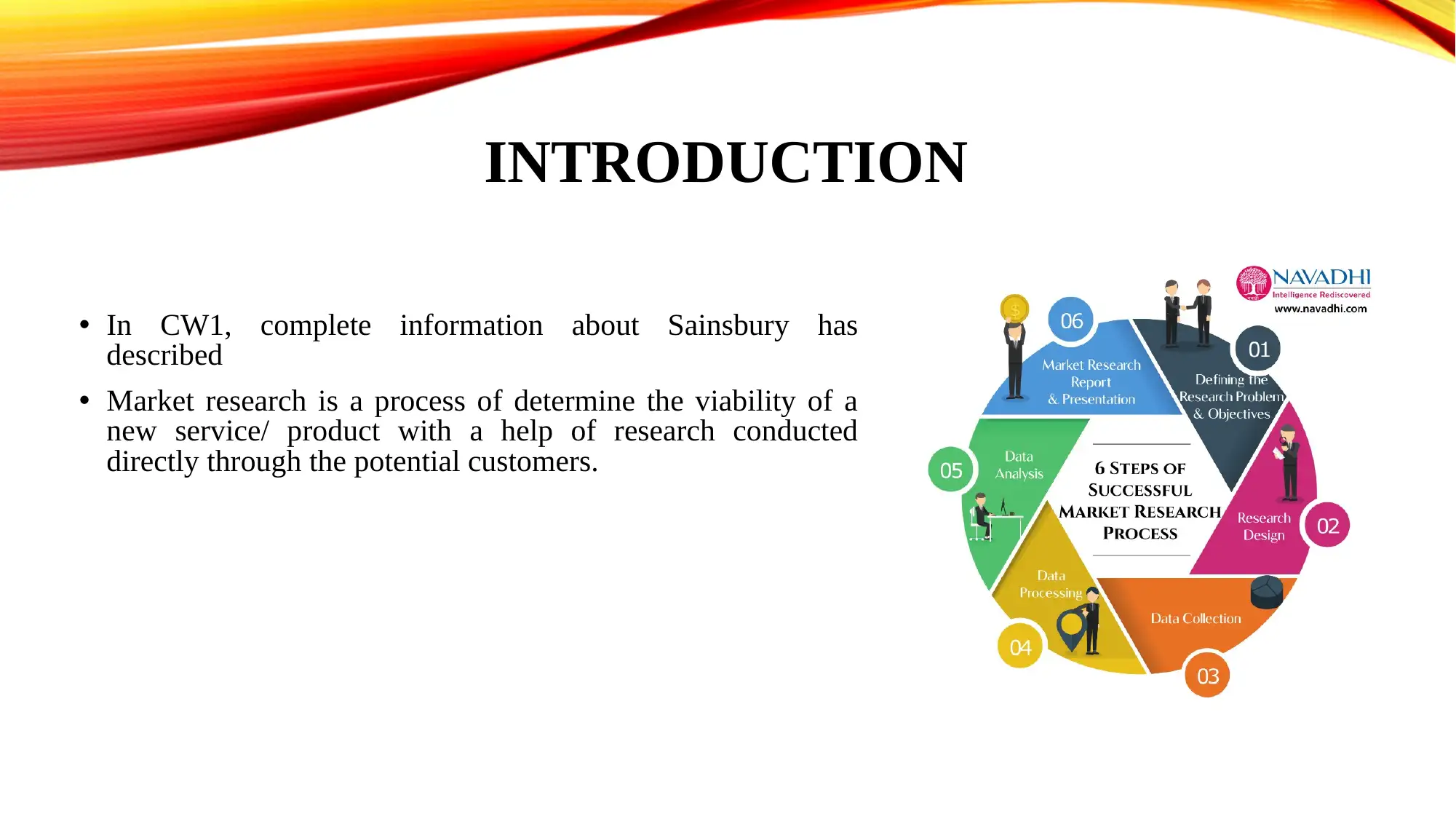
INTRODUCTION
• In CW1, complete information about Sainsbury has
described
• Market research is a process of determine the viability of a
new service/ product with a help of research conducted
directly through the potential customers.
• In CW1, complete information about Sainsbury has
described
• Market research is a process of determine the viability of a
new service/ product with a help of research conducted
directly through the potential customers.
⊘ This is a preview!⊘
Do you want full access?
Subscribe today to unlock all pages.

Trusted by 1+ million students worldwide
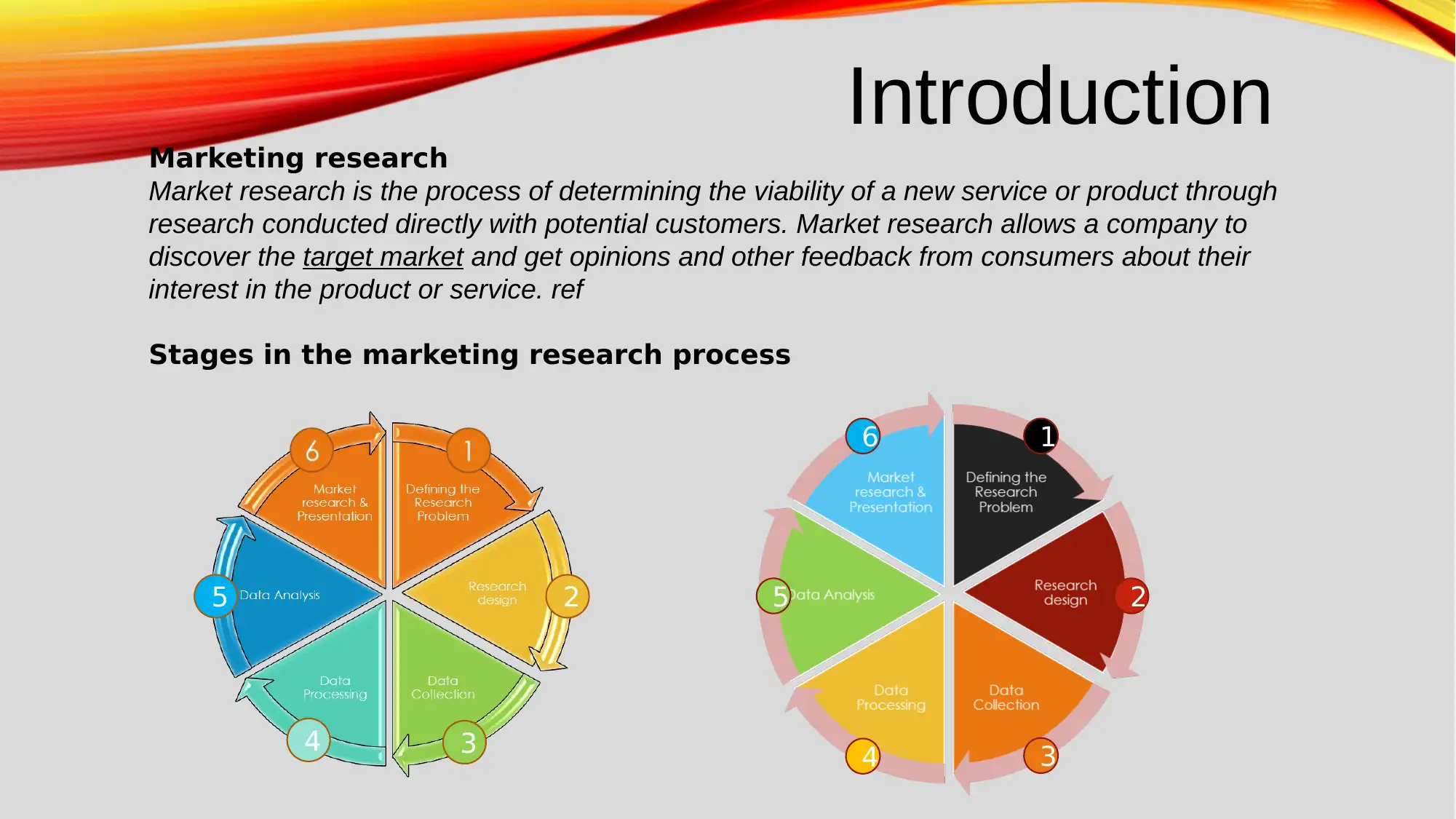
Introduction
Marketing research
Market research is the process of determining the viability of a new service or product through
research conducted directly with potential customers. Market research allows a company to
discover the target market and get opinions and other feedback from consumers about their
interest in the product or service. ref
Stages in the marketing research process
2
34
5
1
2
34
5
6
Marketing research
Market research is the process of determining the viability of a new service or product through
research conducted directly with potential customers. Market research allows a company to
discover the target market and get opinions and other feedback from consumers about their
interest in the product or service. ref
Stages in the marketing research process
2
34
5
1
2
34
5
6
Paraphrase This Document
Need a fresh take? Get an instant paraphrase of this document with our AI Paraphraser
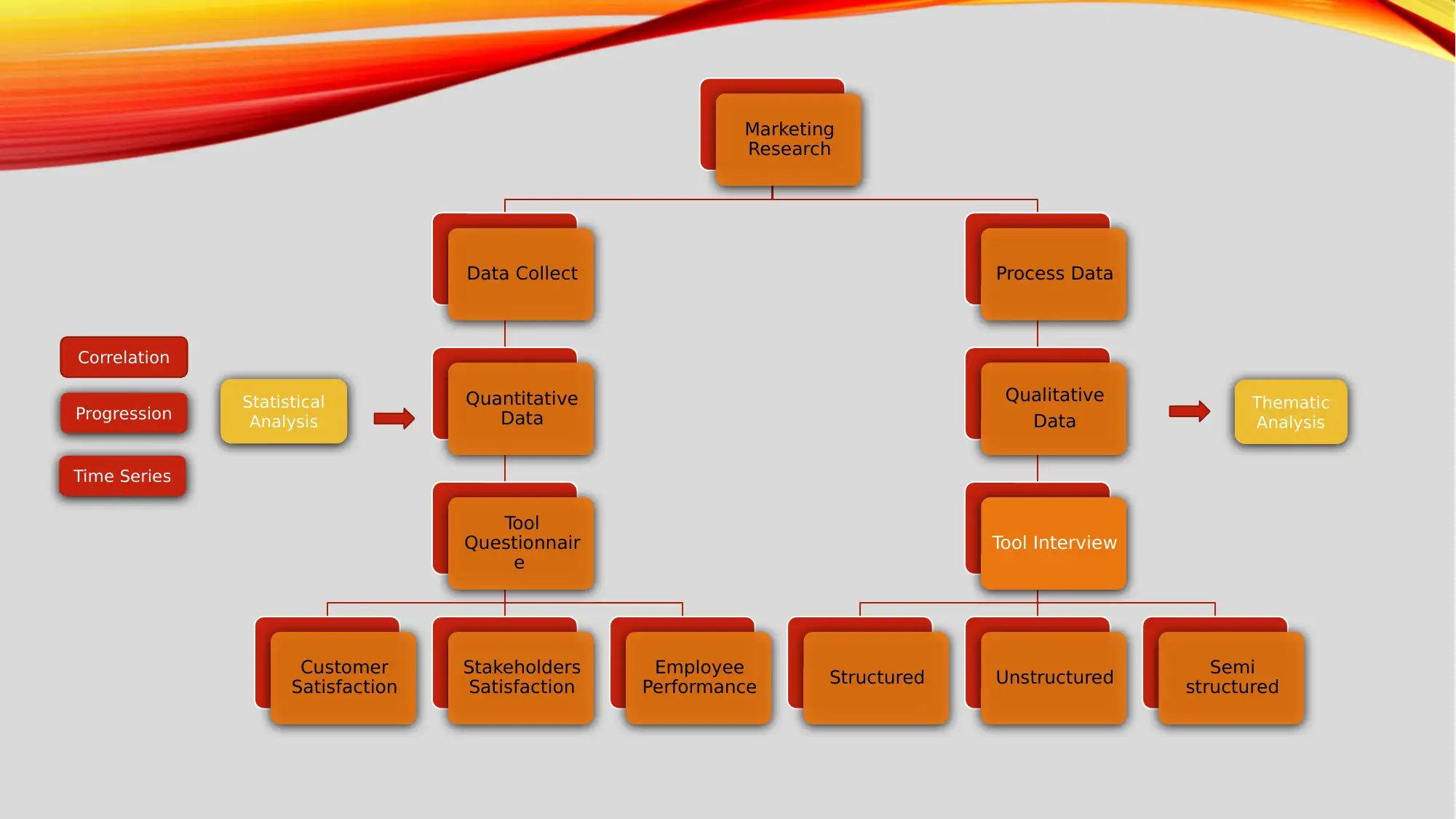
Marketing
Research
Data Collect
Quantitative
Data
Tool
Questionnair
e
Customer
Satisfaction
Stakeholders
Satisfaction
Employee
Performance
Process Data
Qualitative
Data
Tool Interview
Structured Unstructured Semi
structured
Thematic
Analysis
Statistical
Analysis
Correlation
Progression
Time Series
Research
Data Collect
Quantitative
Data
Tool
Questionnair
e
Customer
Satisfaction
Stakeholders
Satisfaction
Employee
Performance
Process Data
Qualitative
Data
Tool Interview
Structured Unstructured Semi
structured
Thematic
Analysis
Statistical
Analysis
Correlation
Progression
Time Series
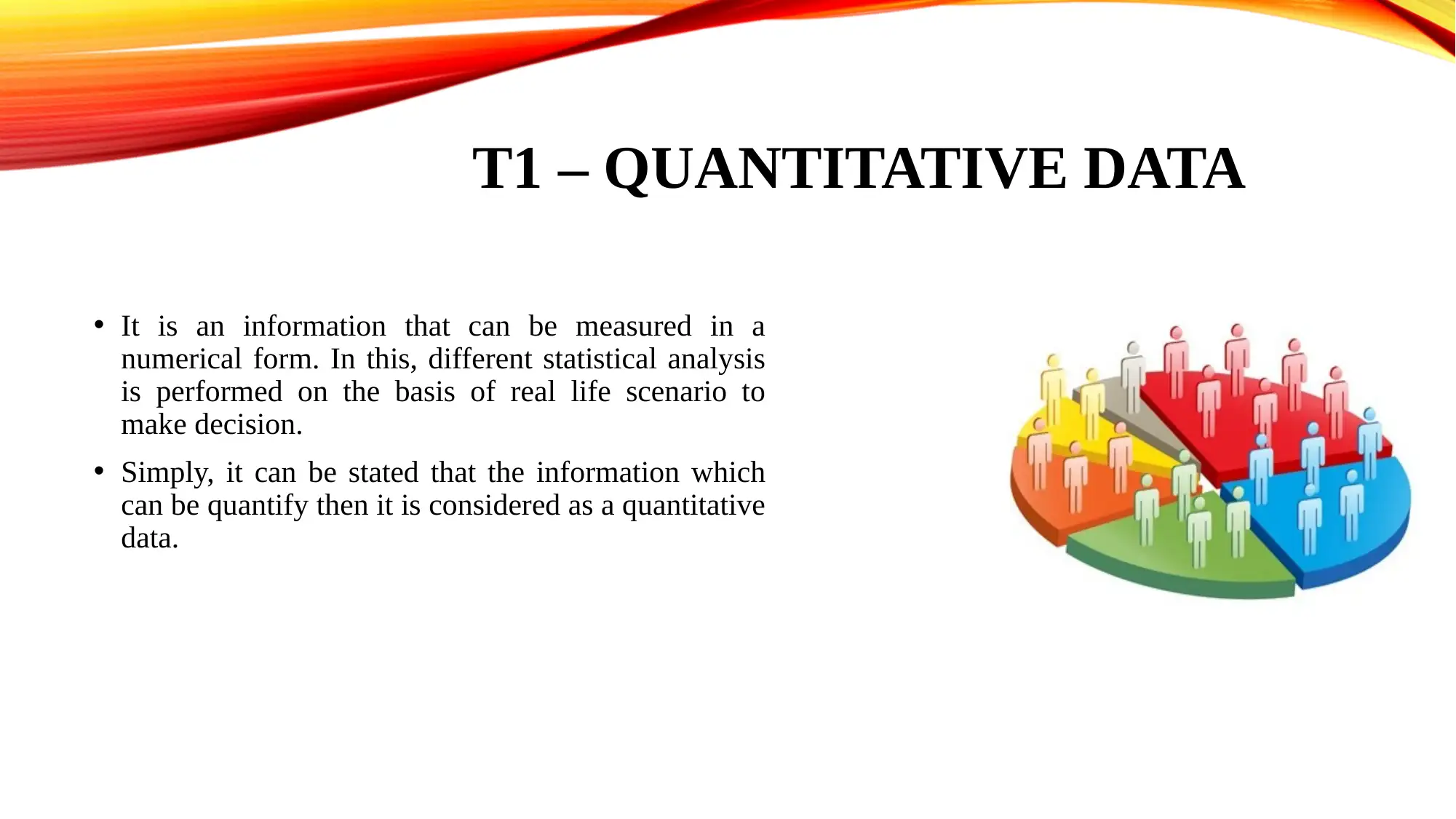
T1 – QUANTITATIVE DATA
• It is an information that can be measured in a
numerical form. In this, different statistical analysis
is performed on the basis of real life scenario to
make decision.
• Simply, it can be stated that the information which
can be quantify then it is considered as a quantitative
data.
• It is an information that can be measured in a
numerical form. In this, different statistical analysis
is performed on the basis of real life scenario to
make decision.
• Simply, it can be stated that the information which
can be quantify then it is considered as a quantitative
data.
⊘ This is a preview!⊘
Do you want full access?
Subscribe today to unlock all pages.

Trusted by 1+ million students worldwide

T1 – QUANTITATIVE DATA (CONT.)
Role of questionnaire in collecting quantitative data
• The questionnaire used for quantitative data is easier to analyse and it can be used by many
researchers as well.
• The method does not took require any additional cost and that is why, researcher used this method.
• Through questionnaire, researcher can determine the best outcome and make decision for the welfare
of a company.
Role of questionnaire in collecting quantitative data
• The questionnaire used for quantitative data is easier to analyse and it can be used by many
researchers as well.
• The method does not took require any additional cost and that is why, researcher used this method.
• Through questionnaire, researcher can determine the best outcome and make decision for the welfare
of a company.
Paraphrase This Document
Need a fresh take? Get an instant paraphrase of this document with our AI Paraphraser
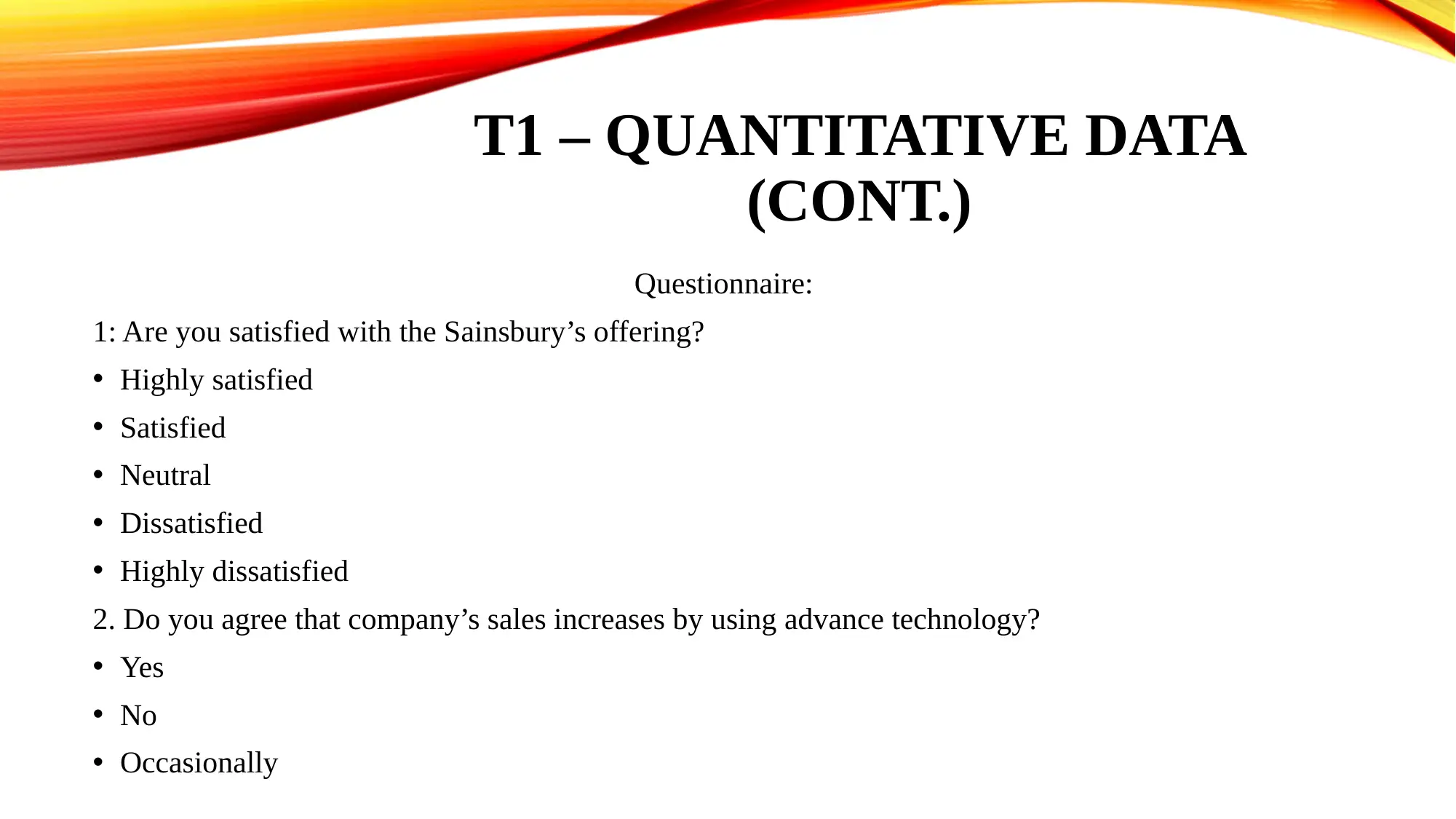
T1 – QUANTITATIVE DATA
(CONT.)
Questionnaire:
1: Are you satisfied with the Sainsbury’s offering?
• Highly satisfied
• Satisfied
• Neutral
• Dissatisfied
• Highly dissatisfied
2. Do you agree that company’s sales increases by using advance technology?
• Yes
• No
• Occasionally
(CONT.)
Questionnaire:
1: Are you satisfied with the Sainsbury’s offering?
• Highly satisfied
• Satisfied
• Neutral
• Dissatisfied
• Highly dissatisfied
2. Do you agree that company’s sales increases by using advance technology?
• Yes
• No
• Occasionally

T2 – QUALITATIVE DATA
• It describe the qualities or characteristic of the data that can be
observed and recorded. Also, it describe the attributes or
properties which an object possess.
• With the help of this, researcher can determine the frequency of
traits so that effective outcome can be generated.
Qualitative
Data
Interview
Structure Unstructure
d
Semi
structured
Survey Observation Group
Discussions
• It describe the qualities or characteristic of the data that can be
observed and recorded. Also, it describe the attributes or
properties which an object possess.
• With the help of this, researcher can determine the frequency of
traits so that effective outcome can be generated.
Qualitative
Data
Interview
Structure Unstructure
d
Semi
structured
Survey Observation Group
Discussions
⊘ This is a preview!⊘
Do you want full access?
Subscribe today to unlock all pages.

Trusted by 1+ million students worldwide
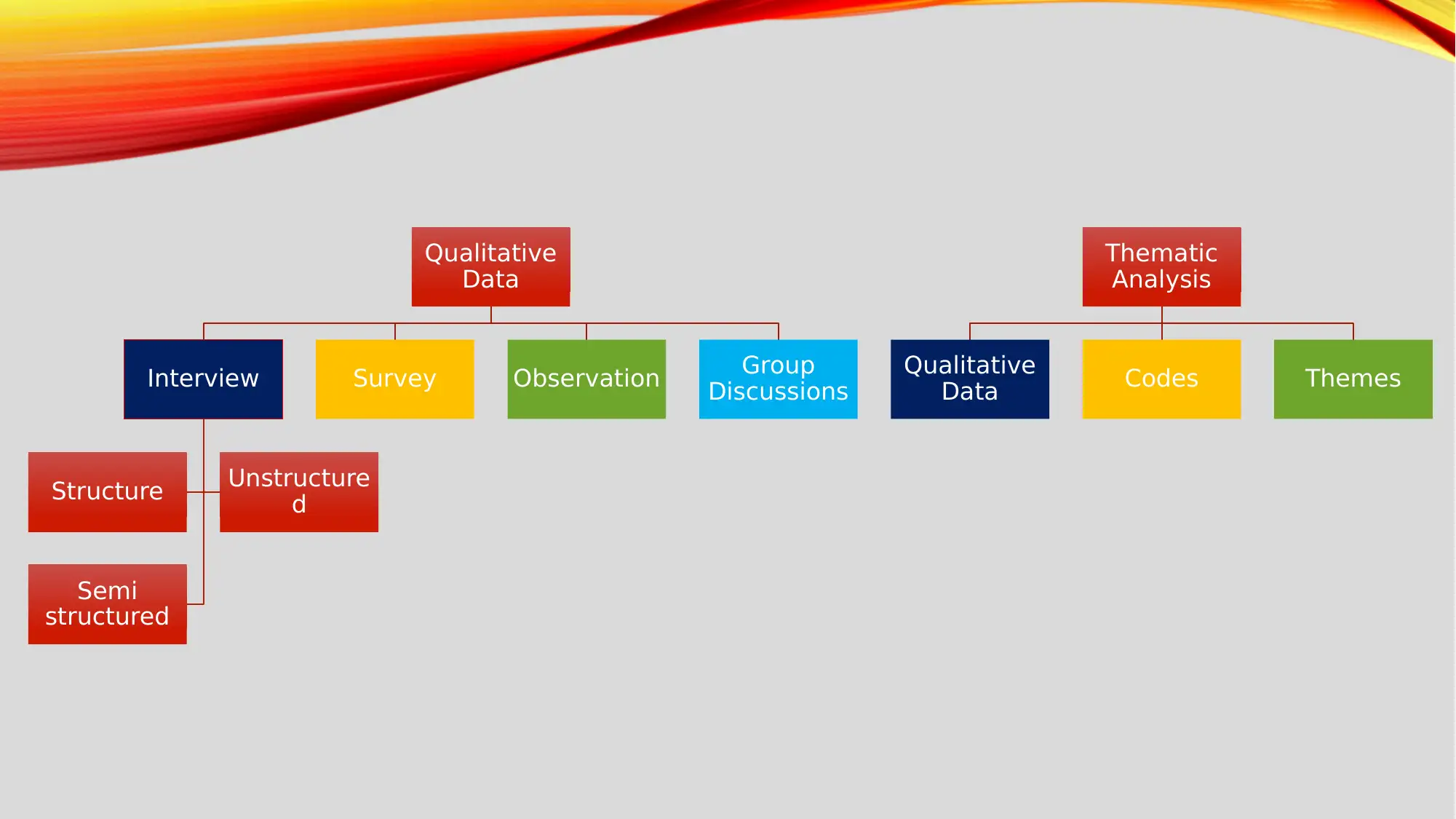
Qualitative
Data
Interview
Structure Unstructure
d
Semi
structured
Survey Observation Group
Discussions
Thematic
Analysis
Qualitative
Data Codes Themes
Data
Interview
Structure Unstructure
d
Semi
structured
Survey Observation Group
Discussions
Thematic
Analysis
Qualitative
Data Codes Themes
Paraphrase This Document
Need a fresh take? Get an instant paraphrase of this document with our AI Paraphraser
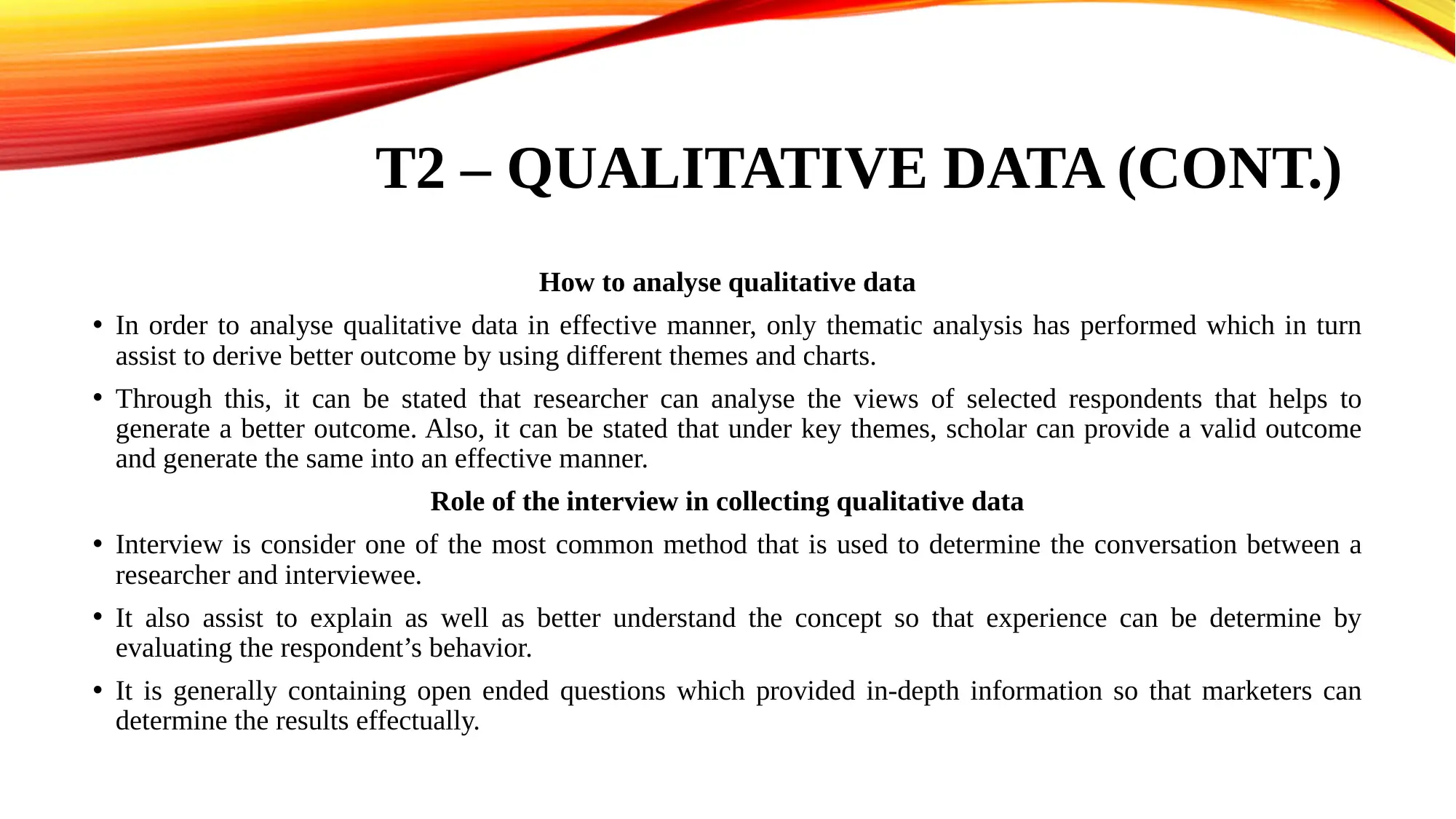
T2 – QUALITATIVE DATA (CONT.)
How to analyse qualitative data
• In order to analyse qualitative data in effective manner, only thematic analysis has performed which in turn
assist to derive better outcome by using different themes and charts.
• Through this, it can be stated that researcher can analyse the views of selected respondents that helps to
generate a better outcome. Also, it can be stated that under key themes, scholar can provide a valid outcome
and generate the same into an effective manner.
Role of the interview in collecting qualitative data
• Interview is consider one of the most common method that is used to determine the conversation between a
researcher and interviewee.
• It also assist to explain as well as better understand the concept so that experience can be determine by
evaluating the respondent’s behavior.
• It is generally containing open ended questions which provided in-depth information so that marketers can
determine the results effectually.
How to analyse qualitative data
• In order to analyse qualitative data in effective manner, only thematic analysis has performed which in turn
assist to derive better outcome by using different themes and charts.
• Through this, it can be stated that researcher can analyse the views of selected respondents that helps to
generate a better outcome. Also, it can be stated that under key themes, scholar can provide a valid outcome
and generate the same into an effective manner.
Role of the interview in collecting qualitative data
• Interview is consider one of the most common method that is used to determine the conversation between a
researcher and interviewee.
• It also assist to explain as well as better understand the concept so that experience can be determine by
evaluating the respondent’s behavior.
• It is generally containing open ended questions which provided in-depth information so that marketers can
determine the results effectually.
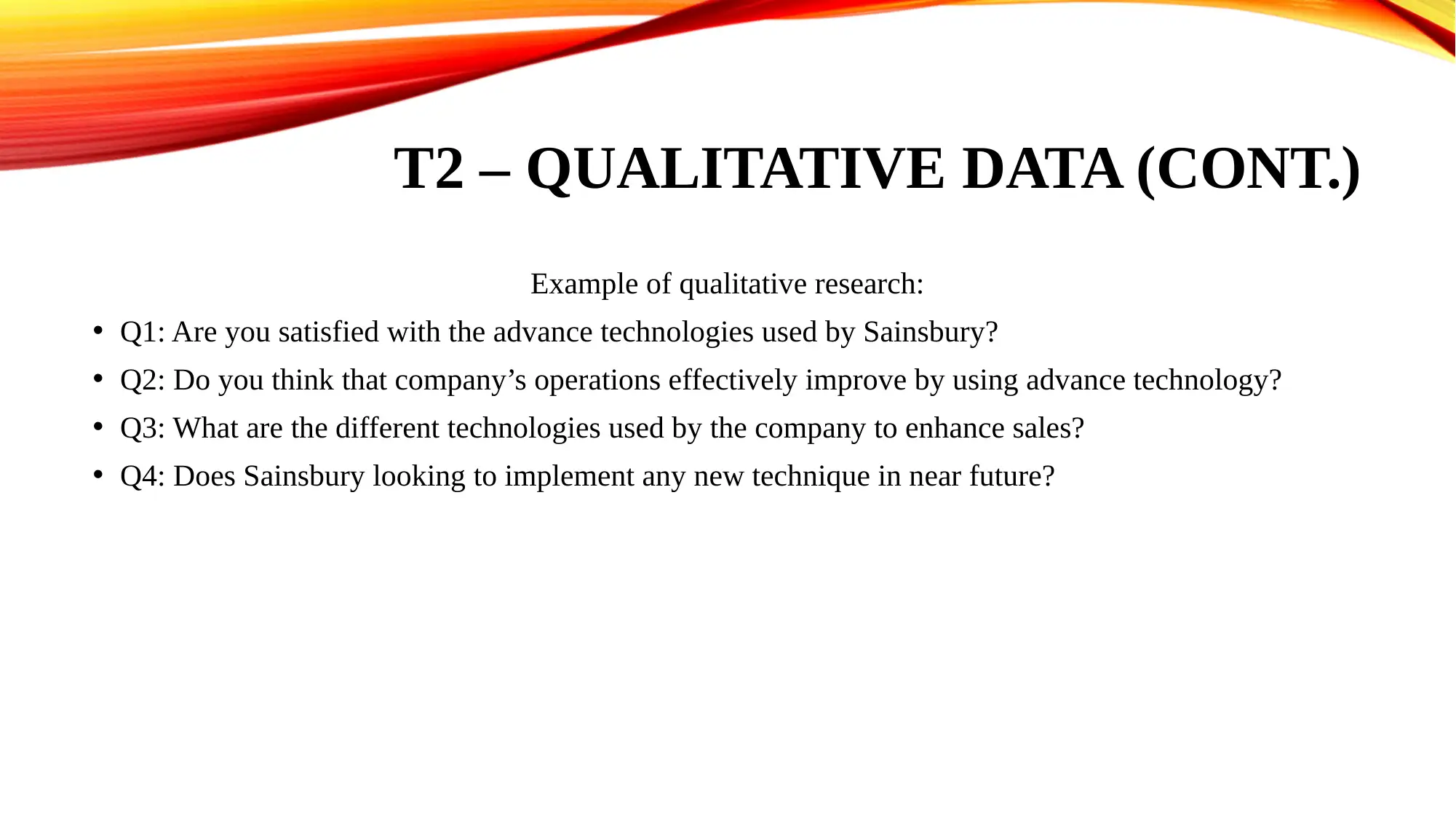
T2 – QUALITATIVE DATA (CONT.)
Example of qualitative research:
• Q1: Are you satisfied with the advance technologies used by Sainsbury?
• Q2: Do you think that company’s operations effectively improve by using advance technology?
• Q3: What are the different technologies used by the company to enhance sales?
• Q4: Does Sainsbury looking to implement any new technique in near future?
Example of qualitative research:
• Q1: Are you satisfied with the advance technologies used by Sainsbury?
• Q2: Do you think that company’s operations effectively improve by using advance technology?
• Q3: What are the different technologies used by the company to enhance sales?
• Q4: Does Sainsbury looking to implement any new technique in near future?
⊘ This is a preview!⊘
Do you want full access?
Subscribe today to unlock all pages.

Trusted by 1+ million students worldwide
1 out of 25
Related Documents
Your All-in-One AI-Powered Toolkit for Academic Success.
+13062052269
info@desklib.com
Available 24*7 on WhatsApp / Email
![[object Object]](/_next/static/media/star-bottom.7253800d.svg)
Unlock your academic potential
Copyright © 2020–2025 A2Z Services. All Rights Reserved. Developed and managed by ZUCOL.




